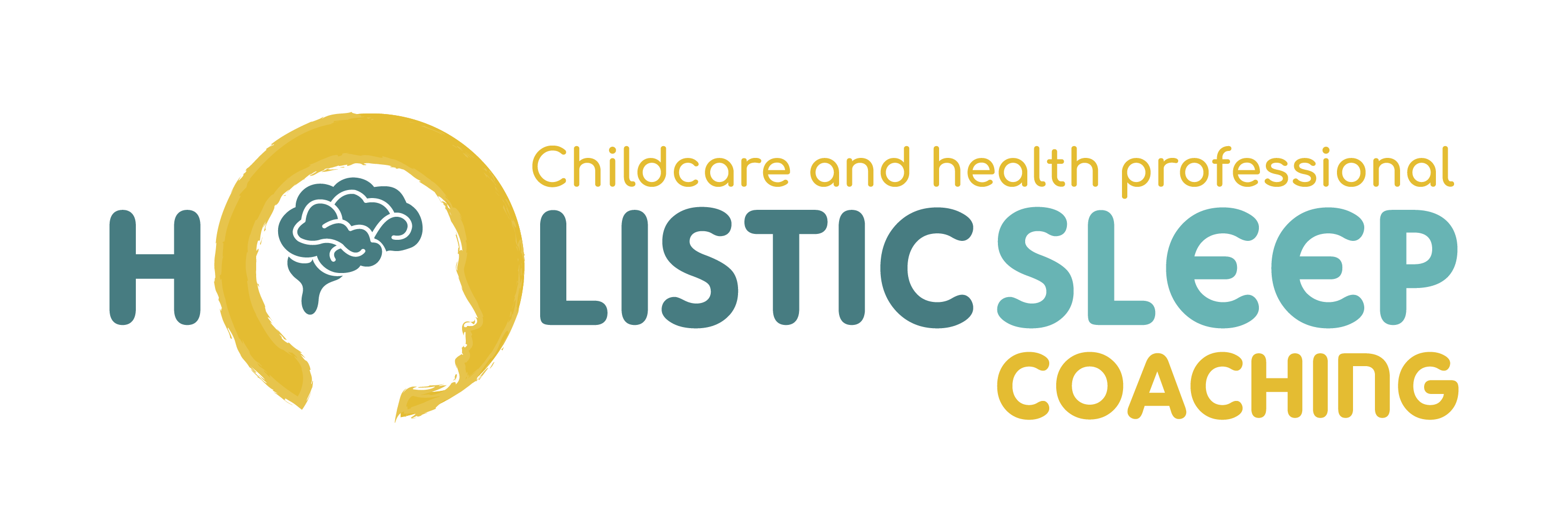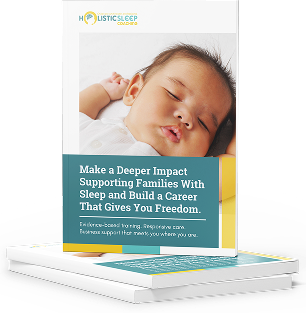Let’s be honest, no one likes the sound of a baby crying. And yet, crying is a reality in every sleep coaching journey. The real question is: how do we understand and respond to crying through a holistic lens?
In this post, I’m diving deep into a topic that’s emotionally charged, often misunderstood, and at the heart of many parenting decisions – crying. You’ll walk away with:
- 5 insights that help frame crying in a compassionate and evidence-informed way
- A clear distinction between holistic and mainstream sleep strategies
- Guidance you can use as a sleep coach or parent to support emotional wellbeing during sleep challenges
🎥 Prefer to watch instead? I walk through this step-by-step in the video below.
Table of Contents
- Insight 1: Crying Is Communication
- Insight 2: Mainstream Sleep Training Normalises Intense Crying
- Insight 3: Gentle Sleep Doesn’t Always Mean No Crying
- Insight 4: Night-Time Crying Isn’t Inherently Different
- Insight 5: Responsive Sleep Coaches Are Not Sleep Trainers in Disguise
- The Holistic Difference: Crying, Responsiveness, and Regulation
Insight 1: Crying Is Communication
Let’s start here: crying is communication, not manipulation, misbehaviour, or failure.
Babies cry because they’re trying to tell us something. That “something” might be hunger, overstimulation, or the discomfort of change. But at its core, crying is a biological signal and one that deserves a response.
In holistic sleep coaching, we don’t seek to eliminate crying altogether. Instead, we help families respond in ways that support emotional regulation, rather than suppressing or ignoring the child’s needs.
Insight 2: Mainstream Sleep Training Normalises Intense Crying
Many non-responsive sleep training methods like think cry-it-out, controlled crying, or the disappearing chair, centre around withholding parental response. These techniques often dismiss crying as something to be ignored.
The origins of this lie in outdated behaviourism models from the 1920s, which framed crying as a behaviour to extinguish rather than a signal to understand.
Some studies have even linked a parent’s “tolerance” of crying to sleep training “success” rates. But is that really the measure of success? Suppressing instinctual responsiveness is not a win, it’s a red flag.
Insight 3: Gentle Sleep Doesn’t Always Mean No Crying
Here’s the tricky part, the ‘gentle sleep’ world has often overcorrected, equating gentle with zero tears.
While we never endorse ignoring a child’s distress, we also acknowledge that change can bring tears, even when we’re supporting it with compassion and presence.
If a parent stops rocking their child to sleep and begins rubbing their back instead, the child might cry. Not because they’re being abandoned but because it’s different.
Our job is not to avoid all discomfort, but to hold space for it, and to help parents do the same.
Insight 4: Night-Time Crying Isn’t Inherently Different
Many responsive parents feel triggered by night-time crying assuming it always equals sleep training.
But here’s the nuance: crying at night is no different from crying in the day. Boundaries that are loving and age-appropriate can still lead to protest or upset. That doesn’t make them harmful.
What matters is the response. Crying while being held and soothed is not the same as crying alone, in silence.
Setting a limit around nursing every 30 minutes overnight, or asking a toddler not to pull your hair while falling asleep, can still be done gently and respectfully, even if it results in tears.
Insight 5: Responsive Sleep Coaches Are Not Sleep Trainers in Disguise
This is important because many families are rightfully cautious.
They’ve heard horror stories. They’ve seen “gentle” programs slowly nudge parents toward non-responsive practices. But when we say holistic and responsive, we mean it.
Yes, some crying may happen. But we do not:
- Leave babies alone to cry
- Withhold comfort
- Punish emotional expression
- Ignore the parent’s instincts
Instead, we look at the full picture: the child’s temperament, the parent’s needs, the urgency of the situation, and the emotional buffers that exist.
This blog further unpacks the misconception that holistic sleep coaching always equals “no crying.”
The Holistic Difference: Crying, Responsiveness, and Regulation
So what actually makes a holistic response different from sleep training?
Let’s break it down into key principles:
- Crying is communication. It should be acknowledged, not ignored.
- Gentle sleep support doesn’t guarantee tear-free change but it always includes presence and compassion.
- Responsive parenting means adjusting your approach based on the child’s signals, not pushing through regardless.
- Emotional co-regulation builds resilience over time. Solo crying doesn’t teach self-soothing connected support does.
There’s no magic formula for how much crying is “too much,” because every child is different. But when we approach this work holistically, we help families find sustainable solutions without compromising connection or mental health.
Want to Support Families with This Kind of Depth and Integrity?
If today’s post resonated with you and you want to become the kind of sleep coach who supports real change without sacrificing responsiveness, we’d love to meet you!
👉 Book a Strategy Session for the Holistic Sleep Coaching Program
Let’s explore if this movement is the right fit for you.

